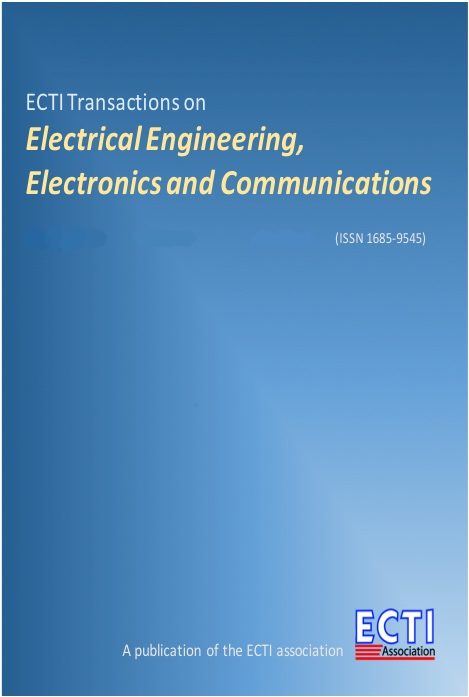Lyapunov Analysis of Two Imbalanced Power System Areas
Main Article Content
Abstract
Transient stability refers to the system’s capability to preserve synchronism while affected by large disturbances. It is a nonlinear problem that requires the simultaneous solution of many differential equations. Therefore, a thorough analysis is needed to resolve it. In this paper, we present an analysis of multimachine transient stability under different fault cases using the Lyapunov function. It serves as an analytical tool to determine the condition necessary for stability. The system remains stable as long as it is contained in the region of attraction. Meanwhile, the swing equation and reduced admittance matrix are used to model the system in three conditions: pre-fault, during the fault, and post-fault. Numerical simulations are conducted to verify the preservation of synchronism under fault on the transmission lines by achieving the critical clearing time.
Article Details
This journal provides immediate open access to its content on the principle that making research freely available to the public supports a greater global exchange of knowledge.
- Creative Commons Copyright License
The journal allows readers to download and share all published articles as long as they properly cite such articles; however, they cannot change them or use them commercially. This is classified as CC BY-NC-ND for the creative commons license.
- Retention of Copyright and Publishing Rights
The journal allows the authors of the published articles to hold copyrights and publishing rights without restrictions.
References
S. A. Kusumo, Tiyono, and L. M. Putranto, “Transient stability study in grid integrated wind farm,” in 2018 5th International Conference on Information Technology, Computer, and Electrical Engineering (ICITACEE), Sep. 2018, pp. 61–66.
J. Douglas, “Power system stability and reliability,” IEEE Power Engineering Review, vol. PER-3, no. 2, pp. 4–7, Feb. 1983.
M. Zainuddin, Sarjiya, T. P. Handayani, W. Sunanda, and F. E. P. Surusa, “Transient stability assessment of large scale grid-connected photovoltaic on transmission system,” in 2018 2nd International Conference on Green Energy and Applications (ICGEA), 2018, pp. 113–118.
P. Kundur, N. J. Balu, and M. G. Lauby, Power System Stability and Control, EPRI power system engineering series. New York, NY, USA: McGraw-Hill Education, 1994.
P. Kundur, J. Paserba, V. Ajjarapu, G. Andersson, A. Bose, C. Canizares, N. Hatziargyriou, D. Hill, A. Stankovic, C. Taylor, T. Van Cutsem, and V. Vittal, “Definition and classification of power system stability,” IEEE Transactions on Power Systems, vol. 19, no. 3, pp. 1387–1401, Aug. 2004.
G. S. Vassell, “Northeast blackout of 1965,” IEEE Power Engineering Review, vol. 11, no. 1, pp. 4–8, Jan. 1991.
T. K. Yudhantomo, L. M. Putranto, B. Sugiyantoro, and Tiyono, “Transient stability analysis in grid integrated solar farm,” in 2019 5th International Conference on Science and Technology (ICST), vol. 1, 2019, pp. 1–6.
T. Hiyama, Y. Fujimoto, and J. Hayashi, “Matlab/Simulink based transient stability simulation of electric power systems,” in 1999 IEEE Power Engineering Society Winter Meeting, vol. 1, Jan. 1999, pp. 249–253.
R. Patel, T. S. Bhatti, and D. P. Kothari, “Matlab/Simulink-based transient stability analysis of a multimachine power system,” The International Journal of Electrical Engineering & Education, vol. 39, no. 4, pp. 320–336, 2002.
S. Ekinci and A. Demiroren, “Transient stability simulation of multi-machine power systems using Simulink,” Istanbul University - Journal of Electrical and Electronics Engineering, vol. 15, no. 2, pp. 1937–1944, 2015.
S. Ekinci, H. L. Zeynelgil, and A. Demiroren, “A didactic procedure for transient stability simulation of a multi-machine power system utilizing Simulink,” International Journal of Electrical Engineering Education, vol. 53, no. 1, pp. 54–71, 2016.
P. W. Sauer and M. A. Pai, Power System Dynamics and Stability. Englewood Cliffs, NJ, USA: Prentice-Hall, 1998.
A. Demiroren and H. L. Zeynelgil, “Modelling and simulation of synchronous machine transient analysis using Simulink,” International Journal of Electrical Engineering Education, vol. 39, no. 4, pp. 337–346, 2002.
M. R. Dadashzadeh and M. Sanaye-Pasand, “A computer software for multimachine power system transient stability analysis,” in 39th International Universities Power Engineering Conference, (UPEC 2004), vol. 3, Sep. 2004, pp. 1043–1047.
M. A. Pai, Power System Stability: Analysis by the Direct Method of Lyapunov, North-Holland systems and control series. Amsterdam, The Netherlands: North-Holland Publishing, 1981.
J. L. Willems, “Optimum Lyapunov functions and stability regions for multimachine power systems,” Proceedings of the Institution of Electrical Engineers, vol. 117, no. 3, pp. 573–577, March 1970.
J. L. Willems and J. C. Willems, “The application of Lyapunov methods to the computation of transient stability regions for multimachine power systems,” IEEE Transactions on Power Apparatus and Systems, vol. PAS-89, no. 5, pp. 795–801, May 1970.
H. Kwatny, L. Bahar, and A. Pasrija, “Energy-like Lyapunov functions for power system stability analysis,” IEEE Transactions on Circuits and Systems, vol. 32, no. 11, pp. 1140–1149, Nov. 1985.
H. K. Khalil, Nonlinear Systems, 3rd ed. Englewood Cliffs, NJ, USA: Prentice-Hall, 2002.
J. B. Moore and B. D. O. Anderson, “A generalization of the Popov criterion,” Journal of the Franklin Institute, vol. 285, no. 6, pp. 488–492, 1968.
B. D. O. Anderson, “A system theory criterion for positive real matrices,” SIAM Journal on Control, vol. 5, no. 2, pp. 171–182, 1967.
D. Pardi, F. D. Wijaya, and A. I. Cahyadi, “Dynamic modeling of prime mover on microgrid testbed using induction motor inverter drive,” in 2019 IEEE 4th International Conference on Technology, Informatics, Management, Engineering Environment (TIME-E), 2019, pp. 61–66.
R. Gholizadeh-Roshanagh, B. Mohammadzadeh, and S. Najafi-Ravadanegh, “Optimal siting of UPFC on a transmission line with the aim of better damping of low frequency oscillations,” ECTI Transactions on Electrical Engineering, Electronics, and Communications, vol. 14, no. 1, pp. 56–64, 2016.


